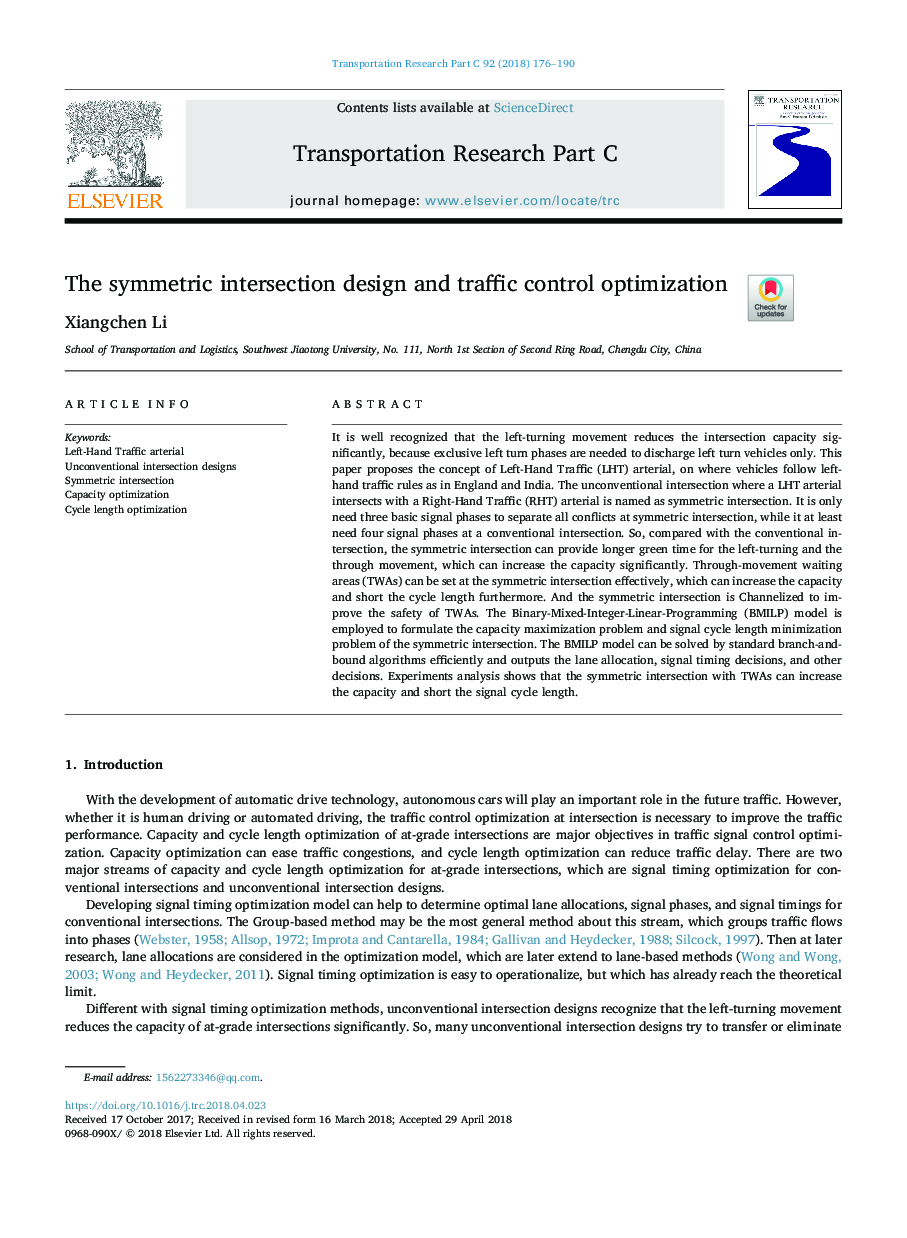| Article ID | Journal | Published Year | Pages | File Type |
|---|---|---|---|---|
| 6935831 | Transportation Research Part C: Emerging Technologies | 2018 | 15 Pages |
Abstract
It is well recognized that the left-turning movement reduces the intersection capacity significantly, because exclusive left turn phases are needed to discharge left turn vehicles only. This paper proposes the concept of Left-Hand Traffic (LHT) arterial, on where vehicles follow left-hand traffic rules as in England and India. The unconventional intersection where a LHT arterial intersects with a Right-Hand Traffic (RHT) arterial is named as symmetric intersection. It is only need three basic signal phases to separate all conflicts at symmetric intersection, while it at least need four signal phases at a conventional intersection. So, compared with the conventional intersection, the symmetric intersection can provide longer green time for the left-turning and the through movement, which can increase the capacity significantly. Through-movement waiting areas (TWAs) can be set at the symmetric intersection effectively, which can increase the capacity and short the cycle length furthermore. And the symmetric intersection is Channelized to improve the safety of TWAs. The Binary-Mixed-Integer-Linear-Programming (BMILP) model is employed to formulate the capacity maximization problem and signal cycle length minimization problem of the symmetric intersection. The BMILP model can be solved by standard branch-and-bound algorithms efficiently and outputs the lane allocation, signal timing decisions, and other decisions. Experiments analysis shows that the symmetric intersection with TWAs can increase the capacity and short the signal cycle length.
Keywords
Related Topics
Physical Sciences and Engineering
Computer Science
Computer Science Applications
Authors
Xiangchen Li,
